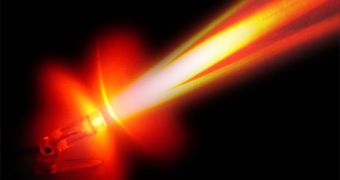A European project funded by EU’s Sixth Framework Programme for research, called UROOF (short for Photonic components for Ultra-wideband Radio Over Optical Fiber), has high goals for data transmission and possibly many other applications in the future. The developing team, coordinated by Moshe Ran, has come up with an advanced system that builds upon both optical and ultra-wideband-radio technologies in order to obtain a hybrid medium that will carry data a lot farther than currently possible.
The experts hope to be able to efficiently stream data-rich packages and services, like high-definition movies, anywhere, from homes to airplanes or ships. Their system is aimed to overcome the very short range that the current wireless signals are able to achieve by combining the best features of optical and radio technologies. “It’s a natural combination that can bring a lot of advantages to the world,” shared Ran, quoted by Eurekalert.
UROOF morphs ultra-wideband (UWB) radio signals (which can relay 20 times DSL's amount of data – up to 480 MB/s) into light beams, carries them to far locations via cheap optical fiber cables and then reverts the beams into radio signals again. “You can’t extend the range over the air,” explained Ran. “So if you want to overcome the limitations of the short range, using optical fibre is a very elegant way of doing it.” Thus, health issues are addressed by significantly reducing signal intensity.
The developers have already built two versions of the device, a cheaper one (Access Node 1, which costs under $100 or €74), relying on silicon-germanium (SiGe) phototransistors and vertical-cavity surface-emitting lasers (VCSELs), able to process 10 GHz signals, and a faster, more expensive one. The latter, dubbed Access Node 2, relies on a device called an electroabsorbtion transceiver (EAT), that modulates an optical signal directly by means of a radio signal.
“With EAT you can approach 60 GHz, but it is expensive,” warns Ran. The future looks promising, as the expert hopes, “As ultra-wideband technology penetrates the mass market – within the next two years – it will be possible to manufacture an access node that will meet the demand very nicely”.

 14 DAY TRIAL //
14 DAY TRIAL //